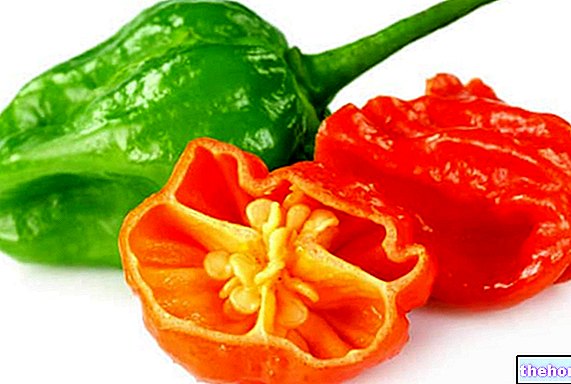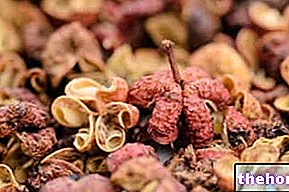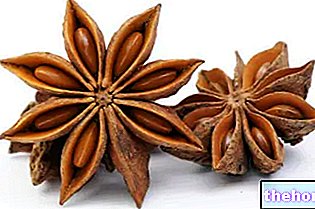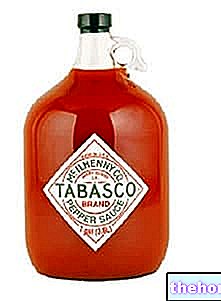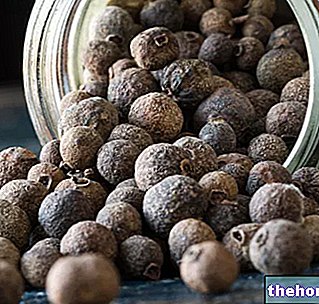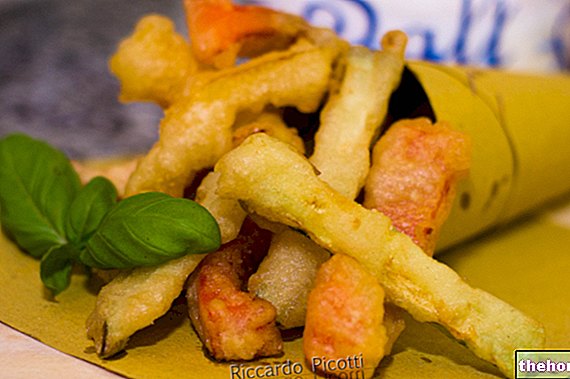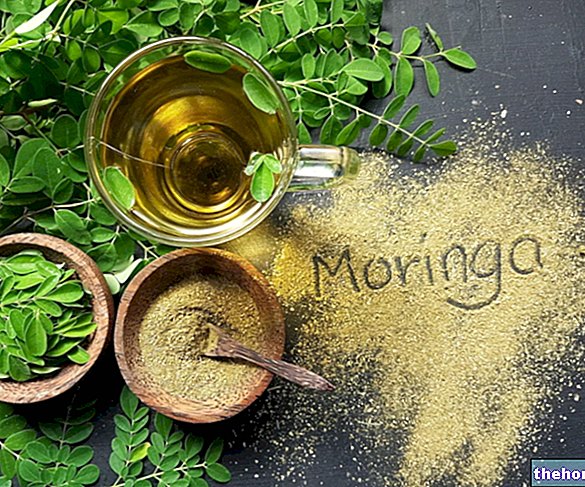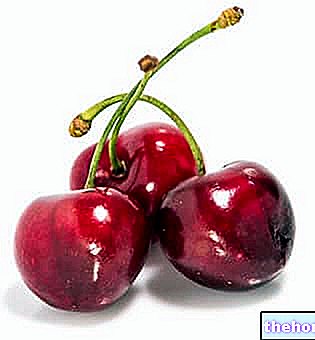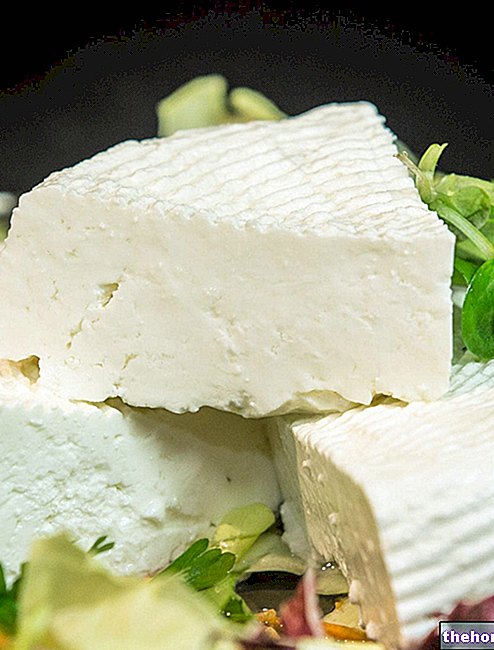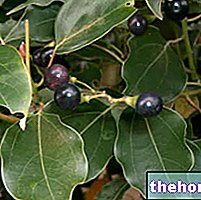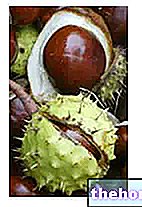Generality
Dill is an aromatic plant belonging to the Apiaceae family, Genus Anethum, Species graveolens; the binomial nomenclature of dill is Anethum graveolens. Dill is a widely used culinary ingredient (due to its organoleptic characteristics) and widely spread both in the East and in the Mediterranean basin.

Description
Dill is an annual herbaceous that rarely exceeds one meter in height; it has a thin, striated stem, articulated in knots and with a circular section, which is articulated only in the highest part, where the umbrella-shaped inflorescences arise (from mid-summer). Numerous yellow flowers differ from these from which small brown fruits (like achenes and therefore improperly called seeds) ripen (at the end of summer). The leaves of the dill are filiform and arranged in a spiral; they are concentrated in the lower part of the stem and branch off just above the underground portion (taproot and roots - very similar to that of chicory). ATTENTION! To an inexperienced eye, the dill can be confused with wild fennel; however, the aroma and taste of the two herbs are not completely overlapping.
Geographical distribution
The dill is native to the northern hemisphere, more precisely to south-west Asia but, by virtue of the favorable environment, it is also widespread in many southern European countries. To tell the truth, not all botanists share the hypothesis that the "dill may have oriental roots and some argue that its presence in the Mediterranean basin is not attributable to human import.
Dill is an aromatic plant that prefers temperate climates and does not tolerate excessively hot or excessively cold ones; for this reason, its presence on the Italian territory is greater in the hilly and low-mountainous regions of the center-north (600-1000m) than at "noon". Also in this case there is a certain ambiguity: it is not clear what the favorite climate of dill can be, due to its good acclimatization capacity.
The most suitable soil for the cultivation of dill is rich in calcium and silicon with a neutral pH, draining and with low humidity.
Etymology
Since ancient times, dill was considered a medicinal plant and its applications ranged from: medicine, aromatization of environments, cooking, etc.
The very nomenclature of dill has very archaic roots. Anethum comes from the Greek term for "anise" (acquired from the "Egyptian) and refers to any therapeutic properties, while graveolens (Latin noun used in scientific classification) refers to the power of its aroma.
Uses of dill
As anticipated, dill has always been considered a medicinal plant. Both the leaves and the fruits (seeds) can be used in infusion in the moderation of some symptoms or ailments such as: colic pains, digestive difficulties, inappetence, mild insomnia etc. Always according to popular medicine, dill can also be useful in increasing diuresis and in fighting intestinal infestations.
In the past, dill was also considered a good aphrodisiac, a tonic for the body and mind, a cure for epilepsy and even a good remedy for bad luck.
Nowadays, dill is considered a predominantly aromatic plant and useful in gastronomy, while phytotherapeutic applications are limited. The edible portion of dill is made up of the leaves and fruits. As regards the leaves, its use ranges from the condiment of peach products to the formulation of composite aromas for some meats and sauces (in India, dill is a essential constituent of pickled preserves). The (oily) seeds are included in some recipes for liqueurs and other spirits, and their chewing proves to be a useful remedy against bad breath. Dill is used in Asia (especially in India), in some areas of Africa and the Middle East, and in Europe (especially in the North and East). Like all spices, it can be considered a natural preservative .
An essential oil is obtained from the seeds of the dill (2.5% content, while 8% consists of fatty oil) which is very useful in the composition of soaps and some types of deodorant. Fruits and essential oil find phytotherapeutic use in the treatment of dyspeptic disorders, thanks to their stimulating properties (they favor the secretion of gastric juice), disinfectants (against fermentation processes) and at the same time spasmolytic (they relax the smooth muscles of the digestive organs). Among the phytotherapeutic uses of dill are mentioned: aerophagia, dyspepsia, hiccups, excessive intestinal fermentation (meteorism, flatulence, infectious diarrhea), nervous vomiting, intestinal colic of nervous origin and infantile colic.
Commission E, the German committee of experts in charge of evaluating herbal medicines, approves dill for digestive disorders.
- To freshen your breath, it is helpful to chew a teaspoon of dill seeds
- The infusions are prepared at concentrations close to 2.5%: 5 grams of crushed fruits (seeds) are immersed for 10/15 minutes in 200 ml of boiling water with the flame off. Filtration and consumption during the day follows (max 3 cups per day). The doses should be reduced, according to medical advice, in preparations intended for children suffering from colic.
- For the use of commercial preparations, rely on the instructions provided by your doctor or on the packaging.
At therapeutic doses, dill is generally well tolerated and without side effects, except in cases of individual hypersensitivity to one or more of its components. At high doses it can induce toxic effects.
Nutritional composition
Dill is an aromatic plant and its nutritional role within the human diet is almost marginal. Dill uses a very high content of mineral salts and vitamins, even if we remember that some electrolytes of vegetable origin (eg. eg iron and calcium) do not have a bioavailability comparable to that of foods of animal origin.
Other Foods - Spices Garlic Dill Cinnamon Cren Curry Daikon Broth Cube Tarragon Monosodium Glutamate Mace Nutmeg Oregano Paprika Black Pepper Green Pepper Pepper Cayenne Pepper Chilli Pepper Parsley Horseradish Rosemary Dietary Salt Whole Salt Iodized Salt Hyposodic Salt Salt Pink Himalayan Salt Mustard Tabasco Vanilla Wasabi Ginger OTHER ITEMS SPICES Categories Food Alcoholics Meat Cereals and derivatives Sweeteners Sweets Offal Fruit Dried fruit Milk and derivatives Legumes Oils and fats Fish and fishery products Salami Spices Vegetables Health recipes Appetizers Bread, Pizza and Brioche First courses Second courses Vegetables and Salads Sweets and Desserts Ice creams and sorbets Syrups, liqueurs and grappas Basic Preparations ---- In the Kitchen with Leftovers Carnival Recipes Christmas Recipes Dietary Recipes Light Recipes Woman's Day, Mother's Day, Dad's Day Functional Recipes International Recipes Easter Recipes Recipes for Celiacs Recipes for Diabetics Recipes for the Holidays Recipes for Valentine's Day Vegetarian Recipes Protein Recipes Regional Recipes Vegan Recipes

